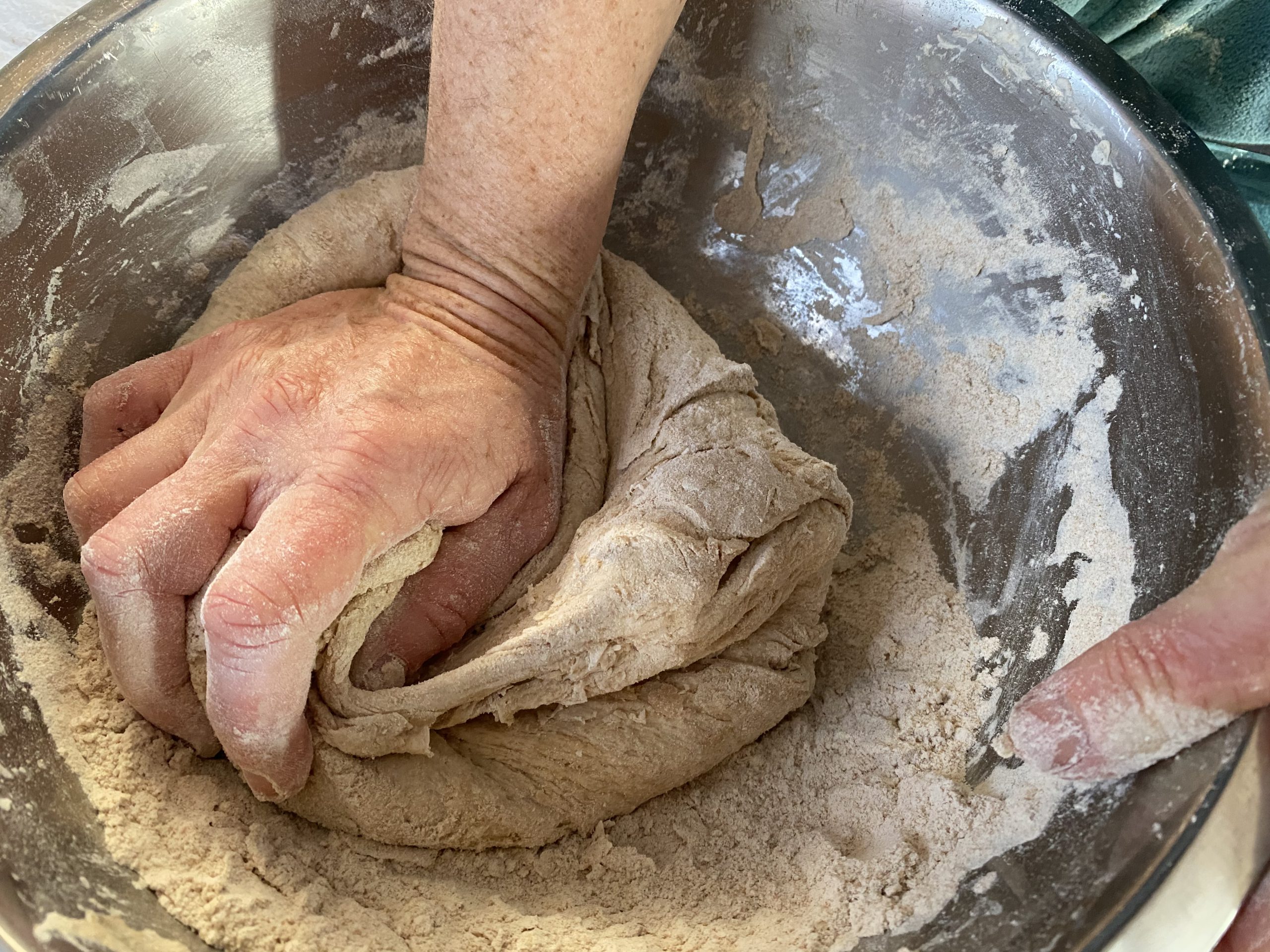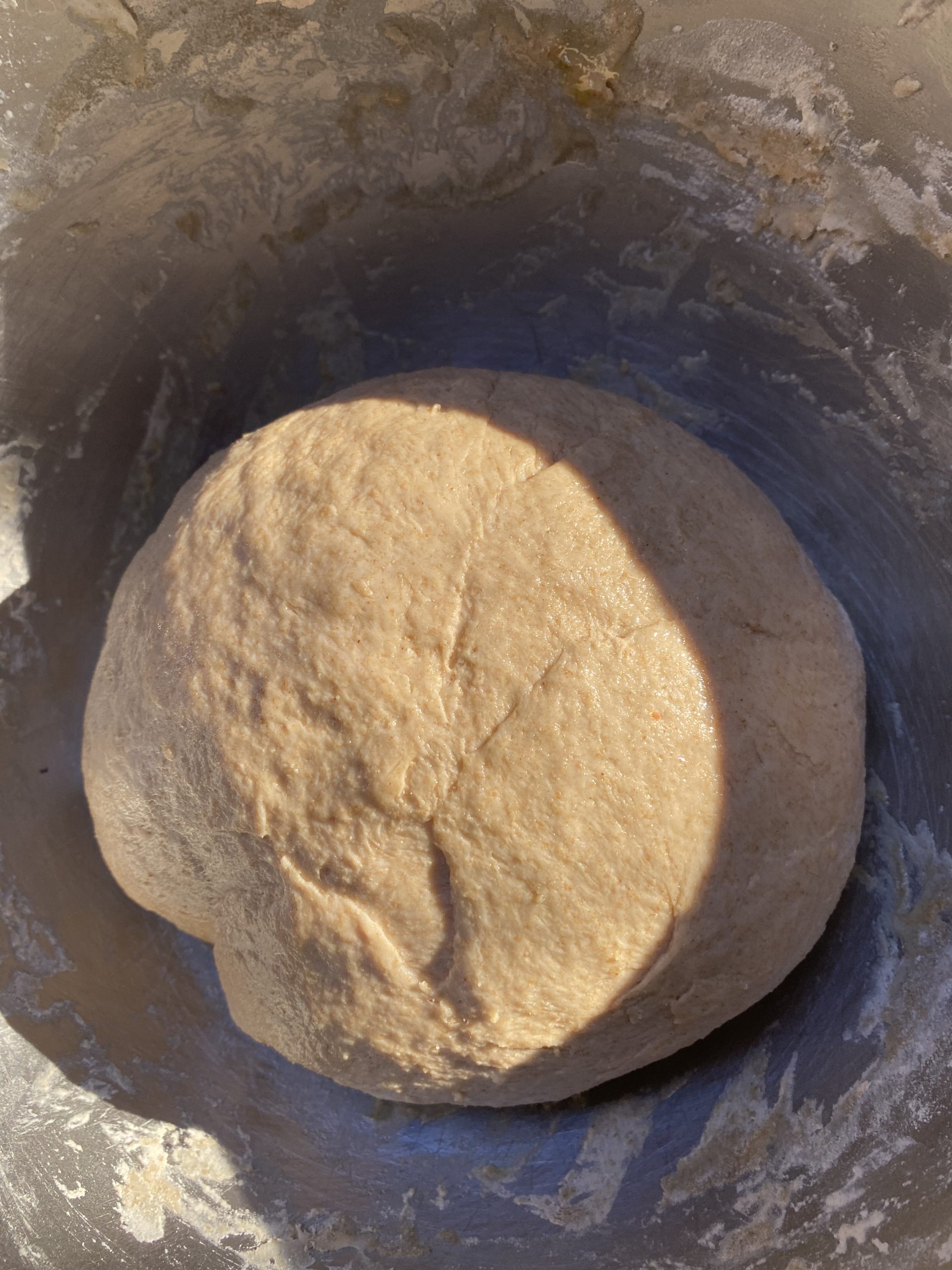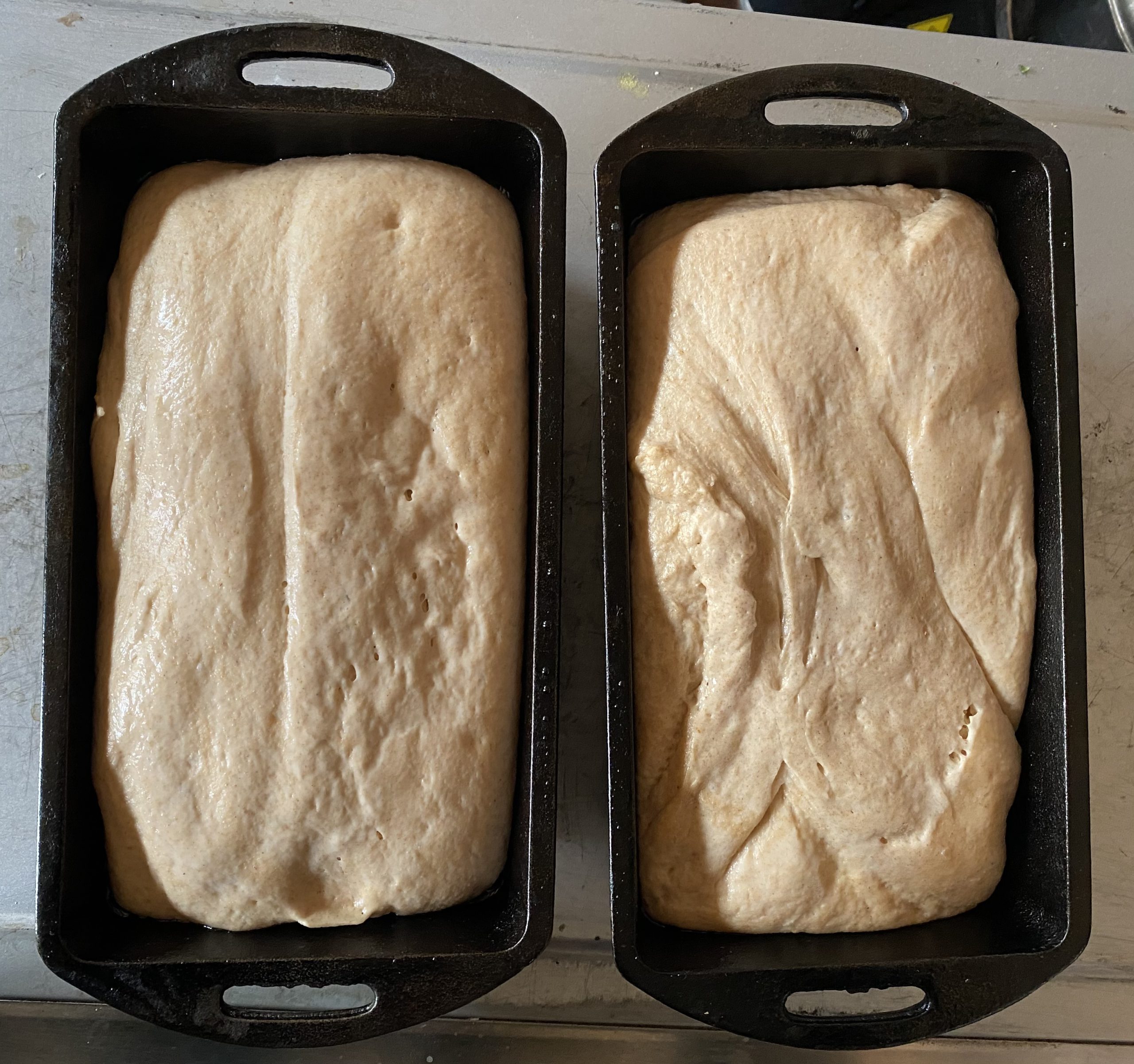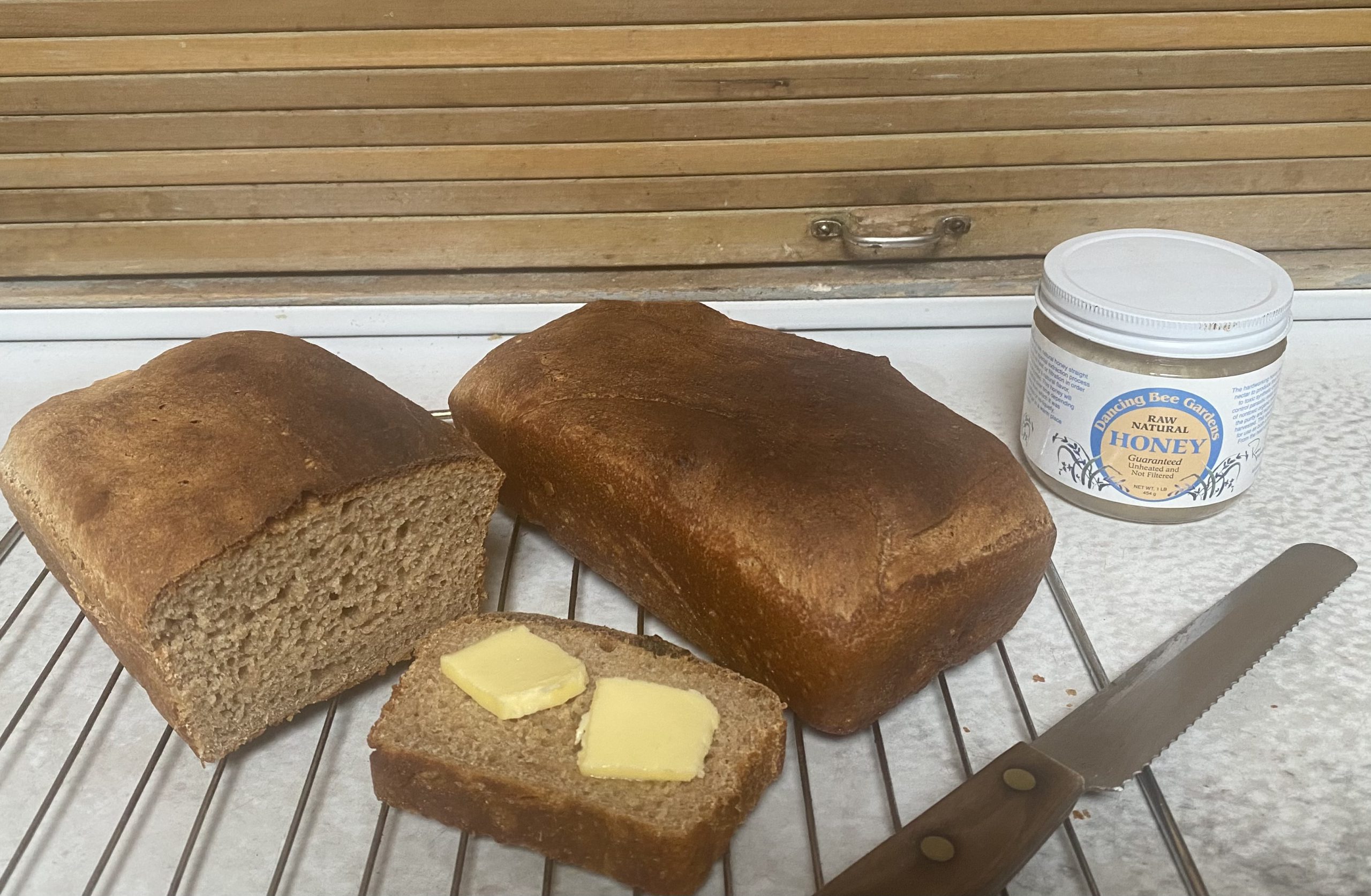Alice Eckles
Everyone was baking. Flour was flying off the shelves. People who never baked a loaf of bread in their lives decided that now was the time to pull themselves together by their apron strings. Pandemic baking, as a Covid coping mechanism, is in the air the same way victory gardens became a way of life in the 1940’s with World War II. And indeed 1,003,925 people in the United States have died of Covid as of June 7, 2022 as compared to 405,000 Americans lost in World War II. When people have to respond to a global crisis they do what they can.
People saw that they could stay home and make their own bread. No need risking lives going to the grocery store every day possibly exposing others or being exposed themselves to the disease.
I was making my own sour dough bread years before the pandemic baking craze set in. I started making bread with the intention of saving money, though with our love of fresh baked bread I’m not sure it saved us a cent. We live out in the woods and the day I was struck with the idea of baking our own bread, the only yeast we had was many years old and I didn’t trust it so I thought of culturing my own sourdough. Yes, it can be done with nothing but flour, water and time. I consulted King Arthur Flour, using their sourdough recipe and calling their baking hotline when I was confused. At the time we had no electricity, so I was baking bread inside our wood stove which was pretty tricky because it’s not designed for cooking and lacks any semblance of temperature control. Baking bread as I do now in a large electric toaster over is much easier, and it’s nice having fresh baked bread close at hand. On my call to the King Authur hotline (855-371-BAKE) I was told that baking bread is really more of an art. People find a way of doing it that works for them. But it feels much more secure to follow a recipe, and I tried to follow the Extra-Tangy Sourdough Bread recipe from King Arthur Flour as closely as I could. The recipe called for sugar, not honey, and that’s what I used, until serendipitously, a woman buying honey from us mentioned that she needed it for making bread and that it made the bread come out much better than sugar. After that big hint from the universe I started using honey instead of sugar in my bread recipe. And yes! It is so much better.
I found that the addition of honey made the dough mix together more smoothly, and the bread was moist and sweet in a nice way. Generally, honey in a recipe protects the moisture in baked goods, keeping them from drying out or getting stale in storage. While it’s typically recommended that you reduce the liquid in the recipe and halve sweetener if using honey instead of sugar, I don’t do any of that and simply replace honey for sugar, one for one, in the recipe. Sometimes I even double the honey amount for added sweetness. I also like to use a greased measuring spoon for the honey so that it slips out of the spoon without any waste. Not that honey sticking to a spoon need be wasted since honey residues can always find a home in my tea cup.
Before you make sourdough, you must have a sourdough starter. It’s not that hard to make your own and I highly recommend it. I think it’s easier than trying to buy sourdough starter, unless you have a friend or family member who has some starter to share. The process of making starter is really quite simple, and takes about five days.
Sourdough Starter Recipe
Ingredients:
Flour
Water
Time
Day one:
Use a two quart jar for your container and add a ½ cup water to a scant cup of flour and let it sit at room temperature with a loose cover over the mixture. A scant cup is a one cup measure that’s a little concave, as opposed to level or rounded.
Day two:
Feed the starter with one scant cup flour and a ½ cup water, stirring vigorously to mix completely. You may see bubbles developing and that’s a good sign. Keep starter at room temperature, on the kitchen counter, the top of the refrigerator or someplace like that throughout this five-day process.
Day three:
Feed the starter again just like the day before. Today your starter should be visibly larger in volume.
Day four:
Feed your starter again just as before, leaving it out at room temperature loosely covered. Your starter should be doubled in size and a bit more liquidy.
Day five:
Check your starter. It should be looking very bubbly, even frothy, and doubled again in volume as compared to before. If it seems activated in this way, it’s ready to use and you may need to read up on the care of your new pet. Your starter will need at least weekly feedings. If your starter doesn’t seem activated keep repeating the steps until it does.
Now, finally you can begin the art of sourdough bread making. I’ve learned over the years how to customize the recipe so that it works for me. Beekeeping is an art too. What we mean by this is that no two people will do it exactly the same way. Each practitioner adapts their process to their circumstances, preferences and sensibility. Some directions, methods and recipes aren’t meant to be followed to the letter. That said here is my sourdough recipe, think of it as a guideline:
Ingredients:
Flour
Starter
Water
Salt
Honey
I like a three day process; although the process can be compressed into two days.
Day one:
Start in the afternoon or evening.
Put your entire starter in a big bowl and add 1 cup flour and ½ cup water. Mix thoroughly. Return half of the starter to its container and store in the refrigerator until you’re ready to make bread again. To the starter left in the bowl, add three cups flour (I like to use white, whole wheat or rye in various amounts and combinations) and 1½ cups water. Stir vigorously to mix. Put a lid on the bowl and set aside overnight.
Day two:
Start in the morning. Add two cups flour, 2½ teaspoons sea salt and a tablespoon or two of honey. Use your hands to scrape around the sides of the mixture so that the flour coats the dough on all sides. Knead the dough into a smooth consistency. This takes time. Keep kneading until all the flour is fully incorporated and the dough is smooth. Oil the sides of the bowl and outside of the dough just enough so that it doesn’t stick to the bowl, especially after sitting overnight. Put a lid over the bowl and let it sit overnight.
Day three:
Start in the morning.
Oil two bread pans. I use cast iron bread pans. You could also use a cookie sheet for a rounder, somewhat flatter bread. Instead of oiling the pan you can also use beeswax to keep your bread from sticking. Simply heat your cookware and rub a chunk of beeswax over it. Divide the dough in two and shape it to fit the bread pans, without handling it too much. Cover the dough with a plastic bag or something to keep the dough moist. The bread needs about five hours to rise, but if you let it rise too long it can fall. Bake the bread in the afternoon at 350° for 45-50 minutes, or until the crust is golden brown and the middle is cooked through.
For a delectable treat try a piece of bread toasted, buttered and spread with crystallized honey, then dot with fresh blueberries for “instant blueberry pie.”
Alice Eckles is the author of The Literature Preferred by Wild Boar, a novel. While she sometimes assists in beekeeping, she mostly handles the value added parts of the beekeeping business she shares with Ross Conrad and has fun exploring the intersection of beekeeping and art via her artist business AliceEcklesStudio.com











